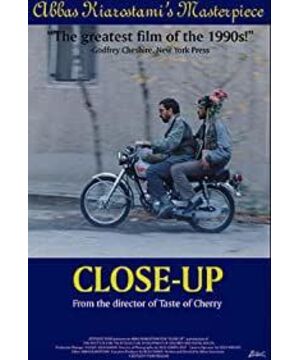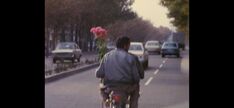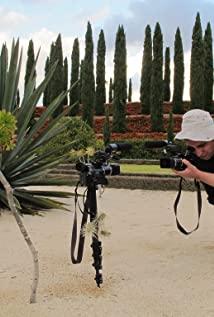Text/Abbas passed away in the old city, and various obituary-style comments were circulated everywhere. Many people looked up to him, relying on famous remarks, "The film starts with Griffith and ends with Abbas" (Godard) , or "He is a uniquely cognizant minority in this world, and his films represent the highest standards of cinematic art" (Martin Scorsese), for him and his people. Critics have struggled to reach consensus on Abbas' films, however, and the diversity of texts he gave them is still debated today. Some people compare him with long-lens poets such as Tarkovsky and Kieslowski, and believe that he is good at visually extending abstract concepts and concepts, allowing those invisible things to be seen and using long-term perspectives. The camera captures the secrets of life, and the poetry of those lives ("The Lover Under the Olive Tree" and the end of "Gone With the Wind"); but some people think that his work is a "pseudo-documentary", although born out of reality, And inspired by social events ("Close-up" and "Childhood One Two Three"), but stuffed a lot of fiction into the "documentary", such as "Close-up" in which the Abbass tried to erase the two people on the motorcycle at the end. In the dialogue soundtrack, Abbas juxtaposes "design" and "improvisation" in the same text in "The Rhythm of Ten Lives", both of which create a confusing sense of reality. In other words, Abbas' films are touching. The place is frank and real, but what is intriguing is that this kind of moving may come from "forgery" and "fake". French film critic Fu Dong once said, "Most of Abbas's films are like a pure film installation, making reality face a social or ethical question." This is probably Godard's sentence "movie Begins with Griffith, Ends with Abbas”; Abbas deliberately debunks the fiction of those performances and stories, suspending seemingly real movie scenes in the ongoing life, the movie is more like A man-made installation, it is difficult for the audience to fully immerse themselves in it. Instead, they pay more attention to the life outside the camera, and can feel the reality of life better. Therefore, the scene scheduling of the film as art is invalid, and the film no longer has the ability to create people. The ability to convince the "phantom" instead creates "phantom" (poetic) and becomes life outside the film. 2. Abbas established the film language of the interplay between reality and reality, starting with "Close-Up". After Abbas finished filming "Where is My Friend's Home", while he and Iranian films were paid attention to by the world, a wave of infatuation with films was also set off in Iran. A man named Jose Chabzian loved movies, and was particularly fascinated by the works of the famous Iranian director Mawson Makmabaf, so he pretended to be Makmabaf to deceive the middle-class Ahanka family. crime and theft Arrested for property crime. After seeing this report, Abbas was curious about the real motives of the perpetrators, so he got in touch with the Ahanka family, and at the same time informed Makhabaf himself, and obtained the judge's permission to film the trial, which formed the later "Close-Up" ". The trial process in "Close-Up" is obviously part of the real record. Abbas set up two cameras in the courtroom, one to record the scene of the court, and the other to record the close-up of Shabuzian; the former is a kind of close-up and continuous attention. , trying to let the audience enter the moral space of Shabuzian, who kept a certain distance from Shabuzian and watched the trial process with a cold eye. However, viewers should not forget that Shabzian knew he was being "featured" (watched) and that his impersonation of Makmabaf was an act of character confusion in itself, and this trial continued." Identity Performance" provides the stage. This divorced, unemployed, and impoverished young man was originally worthy of sympathy. His "evil deeds" can be attributed to anxiety about individual identity and class. However, he avoided the judge's questions and avoided the "fake Makhabaf motive". He even refuted Tolstoy's "The morbidity of human nature is a veil that covers art" to refute the judge. In addition to the excitement, everyone on the scene would probably hesitate. Or an outpouring of truth? There is another layer of meaning in "Close-Up", which is worth pondering. If it is not true that there is a "genuine" Makmapav, then the "fake" Shabqian cannot be falsified only through the video of the court hearing, because in Shabqian's logic, the abstraction endowed by modernity of identity is The object is very confusing, if you think you are Mak-Mabaf, if you think you are Mak-Mabaf, it is easier to be recognized by yourself, then you are him. As Shabzian said sincerely when facing the camera, "Every day I wake up, I want to be a director again, not only because people respect me for it, but because of my love for movies, I'm serious To play the role of the 'director' well, I believe I am that person." What's more interesting is that in "Close-Up", only the process of the trial is the only recorded part, and the rest are "recreated", and everyone plays in front of the camera. The real self, acting as an actor and "reproducing" the whole event, everyone in "Close-Up" is a replica of themselves in life, or a "fake". This is a Rashomon question, but it also goes beyond what Rashomon discusses. Three jokes about the falsifiability of "fakes", which Abbas discusses again in "Reproduction as it is". This time, Abbas's point of view is more clear, "Discussion of the authenticity of artistic creation is unnecessary, because the fake itself is the original The original work is also copied from other works. In "Reproduction as it is", the British scholar James Miller came to Italy to promote his new book "Legal Copy", believing that a fake has the same artistic value as the original. Among James' audience was a French antique dealer woman who wanted to get James' autograph but had no idea what to do. She had to leave early due to family chores, so she decided to invite James to her antique store to meet again. After that, the two held different views on the value of fakes over the originals. During the discussion, the words were tit-for-tat, but they also cherished each other in a small cafe. After being mistaken by the shopkeeper as a husband and wife, the two "make mistakes" and act as husband and wife who have been married for 15 years, with strong affection, as if the passion is still an old husband and wife. "Replicate" has a story of mutual existence between reality and reality, based on Two different presuppositions become two stories, and even at the end, the audience is still unable to tell the truth from the false, whether the two are fake and real friends, or they were originally a couple who rediscovered their youth through role-playing. The passion of the film can be justified by both logics, and Abbas did not give an answer. He still used his own way to confuse the audience with "mirror in the mirror" at the end of the film. Interestingly, if the audience regards James as a copy of the woman's husband If the "fake" has indeed achieved the role of replacing the woman's husband - giving her comfort, it seems that the value is no different from the "real". So who would care about the authenticity of the "fake"? This is the beginning of the film The paradox in question is whether the fake has the same value as the original. This is also Abbas' most intelligent attempt to combine life and art skillfully, which constitutes a pun and intertextuality between the discussion of art issues and the role-playing of real people. Go back and watch "Close Up" and you'll be surprised to see that it doesn't seem far-fetched to see Shabzian as the real director of the film (rather than Abbas). Shabzian plotted to impersonate Mark The entire plot of Mabaf, and let himself be seen through and put in prison awaiting trial, in order to achieve the purpose of attracting the attention of Mak Mabaf, and predicted that Mak Mabaf would make a documentary on this subject; Buff did read the news in the newspaper, and immediately found Abbas for cooperation. The two hit it off and filmed this "Close-Up". With this logic, "Close-Up" can of course be understood. Shabzian filmed his directorial debut under the guise of Abbas. Considering that Shabzian used the footage left by another camera in the trial, he made a defense film "Close-Up Vision" ( Close Up Long-shot), it's hard to say who is who Abbas and Shabzian are. The concept of "fake", which modernity cannot falsify, may have been falsified by Abbas. After four "Close-Ups", Abbas began to constantly remind the existence of the camera in his works, completing the transition from "My camera doesn't lie" to "Never forget that we are watching a movie". If Abbas was still a humanitarian filmmaker before "Close-Up", then after "Close-Up", he has gone further and further towards the creation of films that combine reality and reality. Abbas fictionalized the director of "Where is My Friend's House" in "Life and Life", and instead went to the northern Iranian town after the earthquake to find the two real actors in "Where is My Friend's House". In the film, the "director" was still concerned about the safety of his two children at first. As he entered the earthquake zone, the focus has shifted to the record of people's living conditions after the earthquake, and how people try to get back on track after the earthquake. various efforts. Abbas uses less "close-up" shots this time, but uses long shots with depth of field, which is consistent with another set of shots used in court in "Close-Up", trying to maintain a proper distance from real life and watch the world change with a cold eye; This time, the audience will no longer be kidnapped by the close-up shots, but through the eyes of the "director", they can see that life is continuing and walking. In the film, the "director" always passes through the camera and asks the villagers about the whereabouts of the two children. It seems to reproduce the plot of asking for directions in "Where is my friend's house". Abbas is still reminding the audience that such Ask if the scene is deja vu, "It's probably not real, it's a movie". Between the documentary and the drama, Abbas tries to maintain a vague middle ground, continuing his suspicion of the real and his respect for the unreal. I remember there was such a scene in "Life and Life". A young man in a suit told the director that he had lost more than 60 relatives in the earthquake. In addition to his grief, the villagers suggested that he postpone the wedding, but he did not agree. I can't wait to marry my lover home immediately and start a new life. Abbas was probably so impressed by this scene that he decided to shoot "The Lover Under the Olive Tree" three years later, not only reproducing the story of the newlywed couple in "Life and Life", but also filming the film. Out of this story and the aftertaste. As a result, Abbas again assigned a "director" in "The Lover Under the Olive Tree" to come to the town to shoot the story of the newlyweds. The actor who was chosen as the leading actor stuttered due to over-tension, causing the film crew to stop Filming, the "director" decided to ask Hussain, a young man from the film crew, to save the scene. Coincidentally, in reality, Hussein has always wanted to marry the newlyweds The wife's girl, Taheri, became his wife, but was rejected by Taheri's family due to her inappropriate relationship. Therefore, Taheri was reluctant to play with Hussein at first, but only reluctantly agreed after the persuasion of the crew. Therefore, "The Lover Under the Olive Tree" is the story of the director following the "play" of Hussein and Taheri, but this time it is not a bystander in "Life and Flow", but replaced by "close up". Not surprisingly, the truth of the story outside the "play" is the biggest attraction of "The Lover Under the Olive Tree". Abbas built a "play" stage with natural light, extras, and real scenes. Hussein and Taheri are acting in the "play" and also playing themselves in life. Therefore, when the "director" designed the lines based on the facts in "Life and Flow", "I lost sixty-five relatives in the earthquake", since Hussein himself lost twenty-five relatives in the earthquake, he could not help The unauthorized change of lines caused the "movie" to be NG many times. Hussain must gradually become a character in the "play", put aside his real identity, and convince himself that "sixty-five people" are the "truth", so that the "play" can go on in real At the same time, there are lines in which Taheri calls her husband "Mr. Hussein" in the "play", while in Iran "Mr." is a title for women to call her husband, and she is unwilling to let go of her real identity (refusing to be Hussein). Yin's wife), and replaced reality into the "movie", so the title of "Mr." was always omitted in the "play", and the "director" had to NG many times. It should be said that "The Lover Under the Olive Tree" is very similar to Truffaut's "Night and Day" in structure. Both are about the movies in the movie, but Truffaut is obviously more concerned about the gossip and subtleties outside the film. Most of it is for self-entertainment, while Abbas continues the depth of thinking in "Close-Up", and is committed to capturing the reality or disguise of the characters outside the frame of the film. Five Abbas also designed some "bait" for his "deception" in the movie to increase the difficulty for the audience to identify the truth. Such as the tins in "Bread and the Alley", the gas cans in "The Flow of Life", the rolling aerosol cans in "Close-Up", or the dung beetles rolling dung balls in "Gone With the Wind", these The irregular movement of the object, its direction of movement and its final destination have become the concern of the audience. Attentive viewers will find that these objects are commonplace in life, but it is difficult for adults to sit still and observe them. Abbas uses partial close-ups of objects to force the audience to look at them, helping the audience to shorten the distance between the image space and the real space, and even The audience will confuse the difference between the two spaces at a certain point of time, so as to achieve the purpose of agreeing with the authenticity of the film. In a sense, they are also substitutes for real life or character hearts The rational filler makes the life in Abbas' movies find a real foothold, and is the "bait" of the real objects in Abbas' movies. At the same time, Abbas also arranged some "bait" in the film that could not be captured by "close-up", as opposed to the above-mentioned physical "bait". These illusory decoys are more like a hint, a temptation or a desire. As Abbas said, "What it directly accesses is the audience's desire to know, analyze and understand." "The Lover Under the Olive Tree" In the film, Taheri always covers her face with gauze. During the whole viewing process, the audience will want to know what kind of face is hidden under the mysterious veil; But she kept shooting the female driver, the prostitute's face never appeared in the frame until her back disappeared into the darkness; in "The Taste of Cherry", those cherries that changed people's minds and regained their confidence in life never appeared, the taste of cherries never appeared. The protagonist has no way of knowing how, but it is a kind of temptation, like a temptation that must be tasted before facing death, suspended throughout the film. On the whole, whether it is the veil, the back, or the taste of cherries, Abbas's films are all like a mystery, attracting the audience to be eager to try and find out, which constitutes the audience's desire to watch / meditate. The signifier is the illusory "bait" in Abbas' films. Together with the real "bait", they create a visual space that is both illusory and real in Abbas' films - the veil and clothes in "The Lover Under the Olive Tree" are in the olive tree. After gathering and dispersing, in "Life and Long Flow", the car advances and retreats on the "Zhi" road, and in "Gone with the Wind", the motorcycle undulates in the wind and wheat waves. August 2016 issue of Iris The temptation that must be tasted before death is suspended throughout the film. On the whole, whether it is the veil, the back, or the taste of cherries, Abbas's films are all like a mystery, attracting the audience to be eager to try and find out, which constitutes the audience's desire to watch / meditate. The signifier is the illusory "bait" in Abbas' films. Together with the real "bait", they create a visual space that is both illusory and real in Abbas' films - the veil and clothes in "The Lover Under the Olive Tree" are in the olive tree. After gathering and dispersing, in "Life and Long Flow", the car advances and retreats on the "Zhi" road, and in "Gone with the Wind", the motorcycle undulates in the wind and wheat waves. August 2016 issue of Iris The temptation that must be tasted before death is suspended throughout the film. On the whole, whether it is the veil, the back, or the taste of cherries, Abbas's films are all like a mystery, attracting the audience to be eager to try and find out, which constitutes the audience's desire to watch / meditate. The signifier is the illusory "bait" in Abbas' films. Together with the real "bait", they create a visual space that is both illusory and real in Abbas' films - the veil and clothes in "The Lover Under the Olive Tree" are in the olive tree. After gathering and dispersing, in "Life and Long Flow", the car advances and retreats on the "Zhi" road, and in "Gone with the Wind", the motorcycle undulates in the wind and wheat waves. August 2016 issue of Iris
View more about Close-Up reviews








